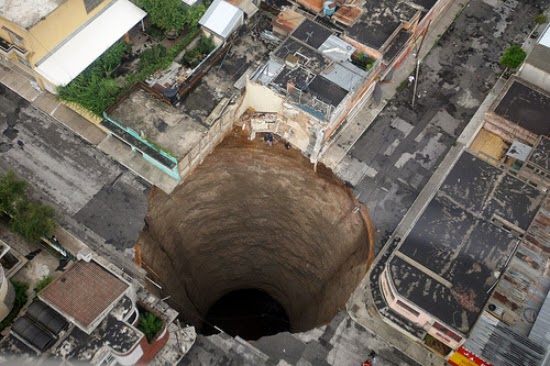Sinkholes and other calamities
A volcano burps and then the year’s first tropical storm of the season washes out. It’s been a rough week for Guatemala. Last week the volcano Pacaya, located about 25 km (15 mi) from the capital city (Guatemala City) mildly erupted, spitting ash and sand all over the metropolitan area and forcing the evacuation of residents closest to its slopes. Pacaya is roughly in a state of continuous eruption, though usually it causes little or no incident. That may be hard to imagine but indeed, at night it’s often possible to see a faint red glow at its top or during the day see a plume or puff of seeping out. It’s a tourist attraction for brave souls who are able to scamper up to its top and peer over the edge, guard rails not included.
Read more from an AP article.
When I lived there in 1998, the same volcano coughed ash all over the city, causing some disruption and again threatening those who lived closest. Twelve years later, the effect is much less benign than it was back then. A thick layer of ash and mostly sand covered the city and families were forced to evacuate or lost their homes completely. Schools closed for a week as they were temporarily reappropriated to serve as emergency shelters. The airport was shut down and left hundreds, probably thousands, stranded. It’s not of the same scale as the effect of Eyjafjallajokull on northern European airspace, but for a small country it’s not trivial.
Less than a week later, tropical storm Agatha, the first named storm of the season, rumbled in from the Atlantic, bringing strong winds and dumping over three feet of rain fell in less than 24 hours. Three feet! Widespread damange was not limited to Guatemala: Honduras and El Salvador were also under Agatha’s wrath. Sadly, hundreds of homes were swept away, mostly in the interior of the country. It’s estimated more than 150 people were killed. The term interior refers, generally, to the less densly-populated areas outside the capital region. It’s also where poverty is highest and infrastructure is weakest. (CSM article) 
from Spreadit.org
Google search shows more jaw-dropping photos of holes in the city. Fascinating, sad, and scary all at once.